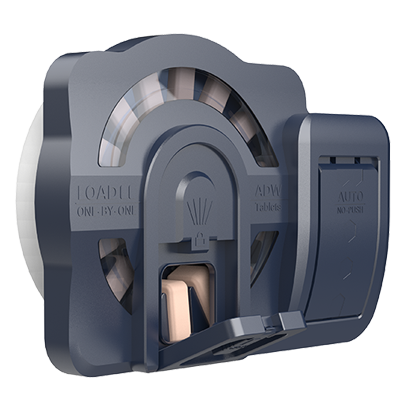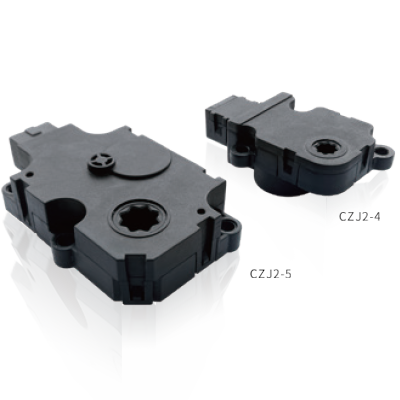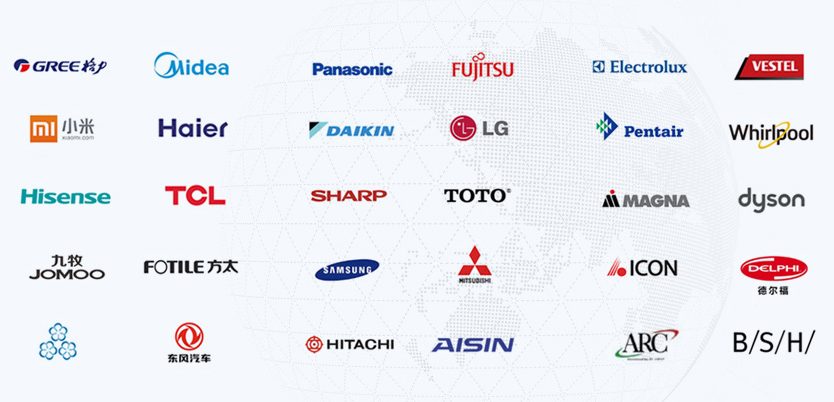Professionally Customize Automobile Motor
Recommended Supporting Suppliers for
Global First-tier OEMs
Industrial Product Supporting Capacity
Low Noise,High Quality,Safety, Low Energy Consumption
Industry Innovations
Dishwasher Dispenser Series
- Intelligent tips for a comfortable home life
- Reliable dispensing for the ultimate experience
- Highly adaptable to meet the diverse needs of users
- Modular design for easy operation
New Products for Automotive Air Conditioning Applications
Automotive Air Damper / Motorised Air Vent Actuator
- Miniaturised solutions, Smaller size, Meet the demand for lightweight automotive products
- Domestic chip, Stable supply, Maintain a certain price advantage
- Consistent size and performance, Can replace the imported product programme

Founded in 1993
Stock code 300660

Qualification

Professional customization
Annual production:200 million motors+

500+
World famous brand partner
Products and Applications
-
Home Appliance Market
Committed to providing innovative solutions for the global home appliance industry
- Leading brand in global air conditioning sweep motor market
- A global leader in washing machine drainage systems
- Global Refrigerator lce Water System Solution Provider
Home Appliance Market
Committed to providing innovative solutions for the global home appliance industry
- Customer Cases




- Specific Classfication
 Air Conditioner
Air Conditioner Refrigerator
Refrigerator Washing Machine
Washing Machine Kitchen & Bathroom
Kitchen & Bathroom Small Home Appliances
Small Home Appliances
-
Auto Parts
Provide motor and mechatronic components for automobiles
- Product advantages of stepper motors for HUD
- Large-scale automotive water pump production capacity
- Automotive air conditioning system solution capabilities
Auto Parts
Provide motor and mechatronic components for automobiles
- Customer Cases




- Specific Classfication
 Air Conditioning System
Air Conditioning System Thermal Management
Thermal Management Intelligent Driving
Intelligent Driving Intake & Exhaust System
Intake & Exhaust System Body Control
Body Control Braking System
Braking System
-
Industrial Control
Provide cost-effective motor and component products in the industrial field
- First-tier brand suppliers in the valve control market
- Domestic security monitoring head enterprise supplier
- Multiple series of products meet different application scenarios
Industrial Control
Provide cost-effective motor and component products in the industrial field
- Customer Cases




- Specific Classfication
 Valve Control
Valve Control OA Finances
OA Finances Garden Tools
Garden Tools Industrial Equipment
Industrial Equipment Security Monitoring
Security Monitoring Robot
Robot
-
Sports Health
Provide high-quality motors for sports equipment and medical equipment industries
- High-end sports equipment main drive motor supplier
- First-tier brand suppliers in the medical device industry
- Ability to provide solutions such as smart furniture
Sports Health
Provide high-quality motors for sports equipment and medical equipment industries
- Customer Cases




- Specific Classfication
 Sports Equipment
Sports Equipment Medical Instruments
Medical Instruments Game Entertainment
Game Entertainment Smart Home
Smart Home
Outer Diameter 20-50mm
Outer Diameter 6.5-60mm
Outer Diameter 35-60mm
Motors for Valve Control
Full Range of Brushless Types
Various Options Available
DC/AC Programme
Washing Machine Drain Pumps
Automotive Heat Management Pumps
Motors for Valve Control
New Products
- The industrial motor on the market is mainly AC high energy consumption, and the application of permanent magnet motor is less.
Rare Earth Removal Efficient
Permanent Magnet Synchronous Motor
More efficient and energy-saving than same-priced asynchronous motor.
Trending for Industrial Motor Development
- High efficiency, energy saving and green development
- Intelligent and integration

Self-developed Stator Soft Magnetic Material
- Strong plasticity, simple manufacturing process
- Energy saving, environmental protection, high strength
Self-developed Magnetic Rotor Material
- High dimensional stability
- Double permeability design, improve the motor full frequency high efficiency band
Integrated Design
- Small size, light weight
- Intelligent, low noise
- Domestic dishwasher penetration rate is low, the market demand has continued to increase in recent years, the market outlook is large.
Industry Innovative
Intelligent Dishwasher Dispenser
Multiple options for different types of detergents.
Dishwasher Development Trend
- High-end functional requirements
- Wider market prospects for embedded / single-use
- Dishwasher detergents towards integration and liquidisation

Highly Adaptable
- Four options to choose from
- Meets most of the dishwasher detergent dispensing needs on the market
Reliable Detergent Dispensing
- Reliable, active pushing out of the dishwasher block
- Liquid filling pump with good liquid viscosity adaptability
Modular Design
- Modular design, simple structure
- Plug-in installation of the dosing pump
- Increasing demand for automotive comfort, automotive air conditioning market trends towards electrification and intelligence.
Automotive Air Damper / Motorised Air Vent Actuator
Miniaturised solutions for lightweight requirements.
Automotive Air Conditioning Air Vents Market Trends
- Automotive air conditioning air vents electrification, intelligence
- Large air outlet area, wide-angle wind sweeping
- Require high efficiency and good stability of air vents

Product Lightweighting
- Miniaturised solutions with smaller dimensions
- Meet the demand for lightweight automotive products
Stable Supply
- Domestic chip, can provide stable supply
- Maintain a certain price advantage
Substitute for Imported Products
- Maintain the same size and performance
- There can be a substitute for imported products programme
Client Cooperation

Providing you with a full range of CUSTOMISED SERVICES

Relying on the application advantages and customer base in the drainage system of washing machines, Leili continues to meet the needs of new projects of customers and provide customized solutions for the functional requirements of high-end washing machines. After years of research and development, the automatic feeding system for washing machines has been mass-produced by customers such as Little Swan and Whirlpool.

The application of Leili motor in refrigerator products is mainly synchronous motor. In recent years, the customer’s demand for refrigerator ice-making function, Leili motor and the customer close communication, collaborative research and development of refrigerator ice and water system components, for the customer to produce high-end refrigerator to provide assistance. At present, the refrigerator component products have been developed in series for different application scenarios of different customers such as Whirlpool, Midea and GE.
News Center
According to the “Administrative Measures for the Quality Award of Changzhou Mayor”, Jiangsu Leili Motor Co., Ltd. is in a fierce competition after the procedures of declaration and recommendation, qualification review, data review, on-site review, inquiry reply, comprehensive evaluation, review and publicity China Outstanding has been awarded the Changzhou Mayor Quality Award in 2019 by the People’s Government of Changzhou.
The Changzhou Mayor Quality Award is the highest honor award established by the Changzhou Municipal People’s Government in quality management. It is awarded to enterprises and institutions and their organizations that have implemented outstanding performance management and achieved significant economic and social benefits. The award is based on the “GB / T 19580-2012 Outstanding Performance Evaluation Criteria” as the main evaluation basis (the Outstanding Performance Management Model is an effective method/tool for comprehensive performance management that is widely recognized internationally). The winner is Changzhou Leading companies in the industry with management innovation, outstanding business performance, and social contributions.
In the process of striving for the district and city quality awards, Jiangsu Leili has made steady progress and achieved new results every year. The company has been unanimously affirmed by the review experts in implementing transformation and upgrading, adhering to winning by quality, shaping the brand of the industry, driving continuous innovation, implementing intelligent manufacturing, and fulfilling social responsibility.
In the future, Rayleigh will continue to adhere to “ingenuity” and build an all-round “quality is life” and “irreplaceable” Rayleigh core competitiveness. Gradually upgrade from “traditional factor-driven” to “Rayleigh’s innovation-driven” and fulfill the development mission of “promoting the progress of the motor industry with excellence and leadership”!
Leili Motor will participate in the Kitchen & Bath China 2013 held at the Shanghai New International Expo Center(2345 Long Yang Road, Shanghai) 5.28-5.31. Our booth number is N5E38.
This exhibition will highlight motors and components in the field of intelligent sanitaryware and kitchen appliances.
Through years of exploration of the control and drive system, our BY series stepper motor, BYJ series stepper gear motor, and BY-G series stepper gear motor support spraying, washing, drying, flipa kinds of sensing operation in the intelligent sanitary ware field. In the small household appliances industry, soybean milk, Household blender, juicer used universal motors, DC motors, etc will also be demonstrated.
Besides, Leili will also be displayed in all aspects of the company’s representative products in other important sectors, like home appliances, valves, washing machines, automotive, etc. Related technical and business personnel will provide on-site support at the scene.
For more information, please visit our website www.czleili.com or email us at webmaster@leiligroup.com.
May 28, 2013 The 18th China (Shanghai) International Kitchen & Bath Exhibition (referred to the 18th Shanghai Kitchen & Bath Show) was held at the Shanghai New International Expo Center, which his is the second exhibition in Frankfurt, Milan Exhibition, the largest in Asia and most influential international exhibition for Kitchen & Bath products in China’s domestic and foreign trade channels.
The total exhibition area is 200,000 square meters indoor with 50,000 square meters. Leili got both in Hall N5, where intelligent ware was gathered and compared to last year, closer to the entrance. As the industry well-known enterprises we had the chance to meet and negotiate with existing customers, well enhanced the image of our company, also catch new customer needs, follow-up technical development, business expansion.
Most of kitchen & Bath top brands gathered here, exhibitors from Guangdong, Foshan, Guangzhou, Dongguan, Kaiping, Chaozhou, Shenzhen, Fujian Nan’an, Xiamen, Sichuan, Shanghai, Taizhou, Zhejiang, Beijing, etc., brands like, Kohler, TOTO, Loca, Hansgrohe, American Standard, Ina, Franke, Norwich Lini and many other well-known international brands. Geberit booth first exhibited in this pageant.
Significantly compared to previous years, instead of the big business campaign, beautiful people and many world-renowned brands swung back to cutting-edge technology, artistic skills, humanities, and classical philosophy of environmental protection products to guide people to feel elegant living. The active participation of new media is also of concern.
This exhibition we show motors used in this industry like stepping motors(stepper motors), DC motors, PM motors and pumps (water pumps) new products well received by customer focus, high-quality electrical products, perfect service and R & D initiative to allow customers to have confidence in the follow-up cooperation.
Electric motors are at the heart of modern industrial applications, and choosing the right motor type is crucial to achieving efficiency, performance, and cost-effectiveness. Two such motor types that often come up in discussions are Switched Reluctance Motors (SRM) and Induction Motors (IM). These motors are used in various applications across industries like robotics, electric vehicles, and manufacturing, but they have distinct operating principles, performance characteristics, and applications.
In this article, we’ll delve into a detailed comparison between Switched Reluctance Motors and Induction Motors, exploring their working principles, performance metrics, advantages, disadvantages, applications, and more.

Introduction to Switched Reluctance Motors (SRM)
An electric motor that works on the principle of reluctance—the opposition to magnetic flux—is known as a switched reluctance motor (SRM). SRMs don’t need rotor windings or permanent magnets like traditional motors do.
The rotor is constructed from a series of iron laminations that exhibit a high reluctance to the magnetic flux in certain positions.
Key features of SRMs:
- Simple Rotor Construction: The rotor of an SRM is simply a set of laminated poles, which makes the design more robust and cost-effective.
- Efficiency: SRMs are known for their high efficiency in specific applications, especially when compared to other motor types at certain load conditions.
The unique design of the SRM offers an excellent performance-to-cost ratio and can be extremely efficient when optimized for specific applications.
Introduction to Induction Motors (IM)
An Induction Motor (IM), also known as an Asynchronous Motor, is the most commonly used type of motor across industries due to its robustness, simple design, and affordability. Through electromagnetic induction from a revolving magnetic field produced by the stator, induction motors generate current in the rotor.
Key features of Induction Motors:
- Stator and Rotor Construction: An induction motor’s rotor is often squirrel-cage or coiled, and it doesn’t need an external electrical connection.
- Reliability: Because of their durability and low maintenance needs, induction motors are perfect for industrial applications.
Because of their adaptability and simplicity of operation, induction motors find extensive use in everything from huge industrial machines to domestic appliances.
Working Principles
Switched Reluctance Motor (SRM)
The reluctance torque principle underlies the functioning of a switched reluctance motor. When the stator windings are energized, a magnetic field is created that attracts the rotor poles to align with the magnetic field. The magnetic field’s stored energy is released as the rotor and stator line up, creating rotational motion.
- The rotor of an SRM has a simple, non-magnetic construction.
- The changing reluctance between the stator and rotor poles moves the rotor.
- To regulate the motor’s performance, the number of stator and rotor poles needs to be carefully chosen.
In essence, the rotor of a SRM seeks to align with the stator’s magnetic field, and as the rotor moves, the stator switches on and off to maintain this alignment.
Induction Motor (IM)
An Introduction The electromagnetic induction concept powers motors. A magnetic field is produced by the rotor’s current being induced by this revolving field. The interaction between the induced current in the rotor and the magnetic field of the stator generates the torque that rotates the rotor.
- The rotor of an induction motor does not have an external power supply but receives its energy through the electromagnetic induction from the stator’s rotating field.
- The rotor always rotates at a slower speed than the magnetic field (hence, the term “asynchronous”).
- The induction motor’s operation relies on the relative speed between the stator’s rotating field and the rotor.
The induction motor’s basic operation principle is relatively simple, making it more common in various industrial and commercial applications.
Performance Comparison
In terms of performance, induction motors and switched reluctance motors have distinct qualities that make them appropriate for various uses. Below, we compare their performance based on key metrics:
| Performance Metric | Switched Reluctance Motor (SRM) | Induction Motor (IM) |
| Torque Density | High, due to the rotor’s simple design | Moderate to High, depending on the type |
| Efficiency | High, especially in low-load conditions | Moderate to High, varies by load |
| Speed Control | Easy, as speed is controlled by switching the stator’s current | Less flexible, but can be controlled via frequency adjustment |
| Starting Torque | High starting torque, ideal for high-load starts | Moderate starting torque, often requires a soft starter |
| Cooling | Requires active cooling for high-speed applications | Passive cooling sufficient for most applications |
| Maintenance | Requires more complex control systems | Low maintenance, robust design |
| Vibration & Noise | High vibration and noise due to torque ripple | Smooth operation with minimal vibration and noise |
Advantages and Disadvantages
Switched Reluctance Motor (SRM)
Advantages:
- Simple Rotor Construction: The rotor is simple and does not require any windings or permanent magnets, reducing cost and complexity.
- High Efficiency: SRMs are highly efficient when optimized for specific applications, especially in scenarios where speed control is critical.
- Robustness: SRMs have a rugged design with minimal components that can fail, making them suitable for harsh environments.
Disadvantages:
- Torque Ripple: SRMs experience torque ripple due to the nature of their operation, which can result in vibrations and noise.
- Complex Control: The control systems for SRMs are more complex, requiring sophisticated electronics to switch the stator windings in a precise manner.
- Limited Popularity: SRMs are not as widely adopted as induction motors, which means fewer resources and expertise are available for design and maintenance.
Induction Motor (IM)
Advantages:
- Proven Technology: Induction motors have been in use for over a century and have a proven track record for reliability.
- Low Maintenance: Induction motors require very little maintenance because of their straightforward design and reduced component count.
- Cost-Effective: Induction motors are often less expensive to manufacture and maintain compared to SRMs and other specialized motors.
Disadvantages:
- Efficiency: While induction motors are efficient, their performance may not match that of SRMs in specific applications.
- Less Speed Control: Speed control in induction motors requires additional equipment, such as variable frequency drives (VFDs), which can add to the complexity and cost.
- Lower Starting Torque: Induction motors typically provide lower starting torque compared to SRMs, which can be an issue in applications requiring high starting torque.
Applications
Both SRMs and IMs are used in various industrial applications, but their characteristics make them suited for different roles.
Applications of Switched Reluctance Motors (SRM):
- Electric Vehicles (EVs): Due to their high torque density and efficiency at low loads, SRMs are gaining popularity in the electric vehicle industry.
- Robotics: Robotics uses SRMs for maximum efficiency and precise speed control.
- Compressors and Pumps: Applications like compressors and pumps that need variable speed control are best suited for SRMs.
Applications of Induction Motors (IM):
- HVAC Systems: Fans, pumps, and blowers for heating, ventilation, and air conditioning systems frequently use induction motors.
- Industrial Machinery: From conveyors to mills, induction motors power a wide variety of industrial equipment.
- Appliances: Home appliances that use induction motors include air conditioners, refrigerators, and washing machines.
Conclusion
In conclusion, depending on their performance, efficiency, and working principles, switched reluctance motors and induction motors each have special benefits and are appropriate for various applications.
Switched Reluctance Motors excel in environments requiring high torque and efficiency with variable speed control but demand complex control systems.
Induction Motors, on the other hand, provide reliable, low-maintenance, cost-effective solutions, making them ideal for general-purpose applications and industries where robustness and simplicity are key.
Ultimately, the choice between an SRM and an IM will depend on your specific application requirements, budget, and desired performance metrics. Both motor types continue to evolve with advancements in technology, and their relative advantages are becoming more apparent in niche applications.
DC motors come in various designs and configurations, each tailored to specific applications requiring different levels of speed control, torque, and efficiency. Among these, a unique type of DC motor features a rotor shaped like a hollow cylinder or cup—this is known as the Coreless DC Motor or Ironless DC Motor.
Coreless DC motors are widely used in precision applications such as robotics, aerospace, medical devices, and high-performance industrial equipment due to their lightweight structure, fast response, and high efficiency.
This article explores the working principle, advantages, disadvantages, and applications of coreless DC motors while comparing them to conventional brushed and brushless DC motors.
Understanding Coreless DC Motors
A coreless DC motor (also called an ironless DC motor) is a type of brushed or brushless motor that has a rotor made from a hollow cylindrical or cup-shaped winding. Unlike conventional DC motors that have an iron-cored rotor, coreless motors eliminate the iron core and instead use a self-supporting coil structure.
Key Features of Coreless DC Motors:
- The rotor is hollow and cylindrical, with windings forming a self-supporting structure.
- The rotor spins around a stationary central magnet.
- The lack of an iron core reduces inertia, making it extremely responsive to voltage changes.
- Eliminating the iron core reduces eddy current losses, leading to higher efficiency.
Working Principle of Coreless DC Motors
The coreless DC motor operates on the same principle as traditional brushed or brushless DC motors, relying on electromagnetic force to generate rotational motion.
Working Mechanism:
Stator Configuration:
- The stator consists of permanent magnets arranged in a circular pattern.
- It provides the magnetic field required for motor operation.
Rotor Design:
- The rotor is hollow or cup-shaped, consisting of a coil winding suspended around the stator.
- When electric current flows through the coil, it generates a magnetic field.
Electromagnetic Interaction:
- The interaction between the magnetic field of the stator and the current in the rotor windings generates torque.
- The absence of an iron core prevents cogging and allows for smooth and precise motion.
Coreless DC Motor Structure:
Below is a simple schematic representation of a coreless DC motor compared to a conventional DC motor.
| Feature | Coreless DC Motor | Conventional DC Motor |
| Rotor Design | Hollow cylinder/cup | Solid iron core |
| Efficiency | High | Moderate |
| Speed Response | Fast | Slower |
| Cogging Effect | Minimal | Present |
| Inertia | Low | High |
| Heat Dissipation | Better | Moderate |
Comparison Between Coreless DC Motors and Traditional DC Motors
Coreless motors are often compared with traditional brushed and brushless DC motors. Below is a detailed comparison:
| Characteristic | Coreless DC Motor | Brushed DC Motor | Brushless DC Motor (BLDC) |
| Rotor Shape | Hollow Cylinder/Cup | Iron-core cylindrical | Permanent magnets |
| Efficiency | High (low eddy current loss) | Moderate | High |
| Response Time | Very fast | Slow | Fast |
| Starting Torque | High | Moderate | High |
| Cogging Effect | Very low | Present | Low |
| Heat Dissipation | Efficient | Moderate | High |
| Maintenance | Low | Requires brush replacement | Very low |
| Noise & Vibration | Low | High | Low |
| Applications | Robotics, medical devices | Power tools, toys | Drones, EVs, precision drives |
Advantages of Coreless DC Motors
Higher Efficiency
- Eddy current-induced iron losses are absent with coreless motors.
- Eliminating the iron core reduces energy waste, improving overall motor efficiency.
Rapid Response & High Acceleration
- Due to their low inertia, coreless motors accelerate and decelerate much faster than conventional motors.
- This makes them ideal for precision control applications.
No Cogging Effect
- Conventional DC motors experience cogging, which is a jerky motion due to magnetic interaction with the iron core.
- Coreless motors provide smooth motion, crucial for high-precision tasks.
Compact & Lightweight
- The hollow cylindrical rotor reduces overall weight.
- These motors are ideal for portable or weight-sensitive applications like drones and medical equipment.
Reduced Heat Generation
- Since there is no iron core, heat dissipation is more effective.
- The motor can run cooler, improving longevity.
Disadvantages of Coreless DC Motors
While coreless DC motors offer numerous benefits, they also have some limitations:
Higher Manufacturing Costs
- The complex winding structure increases production costs.
- The cost of materials (especially high-performance magnets) is higher.
Lower Torque Density
- Coreless motors lack an iron core, which means they cannot produce as much torque per unit size.
- They are not ideal for heavy-load applications.
Delicate Rotor Structure
- The hollow cylindrical winding is fragile compared to iron-core designs.
- These motors require careful handling to avoid damage.
Limited Power Output
- Due to their compact size and lightweight nature, coreless motors have a lower power output compared to conventional brushed or brushless motors of the same size.
Applications of Coreless DC Motors
Coreless DC motors are used in applications requiring precision, low inertia, and high-speed response.
| Industry | Application |
| Medical Devices | Surgical tools, infusion pumps, prosthetics |
| Aerospace | Satellites, UAV actuators, precision motion control |
| Robotics | Servo actuators, robotic arms, exoskeletons |
| Industrial Automation | High-speed actuators, scanning heads |
| Consumer Electronics | Drones, gimbals, high-performance audio devices |
Conclusion
Coreless DC motors, with their hollow cylindrical or cup-shaped rotors, offer a unique set of advantages, including high efficiency, rapid acceleration, smooth motion, and minimal cogging effects. They are perfect for precision applications in the industries of robotics, aerospace, and medicine because of these qualities.
However, they also come with higher costs, lower torque density, and delicate construction, making them unsuitable for high-load applications.
When selecting a motor, it is essential to consider factors like efficiency, torque, speed, and cost to determine whether a coreless DC motor is the right choice for your application.
Brushless and brushed DC motors essentially perform the same function of converting electric current into rotational motion. However, there are still several differences between the two types of motors. Working principles will be explained before we talk about their differences.
Working principle of a brushed DC motor
When the motor works, the coil and commutator rotate, the magnet and carbon brush do not rotate, and the alternate change of coil current direction is achieved by the commutator and brush that rotate with the motor. Brushed motors are divided into high speed brushed motors and low speed brushed motors in the electric vehicle industry.
A brushed DC motor consists of two main parts: stator and rotor. The stator has magnetic poles (winding type or permanent magnet type) and the rotor has winding, and when energized, the rotor also forms a magnetic field (magnetic poles), and there is an angle between the magnetic poles of the stator and rotor. By changing the position of the brushes, the direction of the stator-rotor pole angle can be changed, thus changing the direction of rotation of the motor.
Working principle of a brushless DC Motor
An electric brushless BLDC motor takes electronic commutation, where the coil does not move and the magnetic poles rotate. It uses a set of electronic devices to sense the position of the magnetic poles of the permanent magnets through Hall elements. Electronic circuits are used to switch the direction of the current in the coils at the right time to ensure that the correct direction of magnetic force is generated to drive the motor.
These circuits are the motor controllers. The controller of a brushless motor can also realize some functions that cannot be realized by a brushed motor, such as adjusting the power switching angle, braking the motor, reversing the motor, locking the motor, and stopping supplying power to the motor by using the brake signal.
A brushless DC motor consists of a motor body and driver, which is a typical mechatronic product. Since the brushless DC motor operates in a self-controlled manner, it does not add another starting winding to the rotor like a synchronous motor that starts under heavy load under frequency regulation.
Differences between brushed DC motors and brushless DC motors
1. Mode of speed regulation
The speed regulation process of brushed DC motors is to adjust the motor power supply voltage level. The adjusted voltage and current are converted through the rectifier and brushes to change the strength of the magnetic field generated by the electrodes, thus changing the speed. This process is called variable voltage speed regulation.
The speed control process of a brushless DC motor is to keep the voltage of the motor power supply unchanged, change the control signal of the ESC, and then change the switching rate of high power MOS tube through microprocessor to realize the change of speed. This process is called variable frequency speed regulation.
2. Simple structure and long development history of the brushed DC motor
A brushed DC motor is a traditional product with more stable performance, and a brushless DC motor is an upgraded product with better life performance than ba rushed motor. However, the brushless motor has a complicated control circuit, so it has a more strict aging screening requirement for components.
Soon after the brushless motor was born, people invented the brushed DC motor. The brushed DC motor has been widely used once it was launched on the market due to its features: simple mechanism; easy to produce, process, maintain, and control; fast response; large starting torque; rated torque is available from zero speed to rated speed.
3. Fast response and large starting torque of the brushed DC motor
The brushed DC motor has fast starting response, high starting torque, and smooth variable speed, so vibration can hardly be felt when the speed changes from zero to maximum, and a larger load can be driven when starting.
The electric brushless BLDAC motor has large starting resistance (inductive resistance), so the power factor is small, the starting torque is relatively small, there is a humming sound accompanied by strong vibration when starting, and the starting drive load is smaller.
4. The brushed DC motor runs smoothly and has perfect starting and braking effect
The speed of the brushed DC motor is regulated by voltage regulation, so it starts and brakes smoothly, and runs smoothly at a constant speed.
The brushless DC motor is usually digital frequency conversion control that converts AC into DC, then DC into AC again, and controls speed through frequency change, so the brushless motor cannot run smoothly and vibrates strongly.
5. High precision control of brushed DC motors
Brushed DC motors are usually used together with gearboxes and decoders to make the motors have more output power and higher control accuracy, thus allowing the moving parts to stop almost anywhere. All precision machine tools use DC motors to control accuracy. Brushless motors are not smooth in starting and braking, so the moving parts will stop at different positions every time, and must be stopped at the desired position by means of positioning pins or limiters.
6. Brushed DC motors have low cost and are easy to maintain
Its simple structure, low production cost, many manufacturers, and mature technologies enable the brushed DC motor to have more widespread applications, such as factories, processing machine tools, and precision instruments, etc. In case of motor failure, you should only replace the carbon brush. Brushless DC motor has immature technology and expensive price, so it has limited applications, such as inverter air conditioners, refrigerators, and other constant speed equipment.
7. The brushless DC motor has low interference
According to the brushless motor factory, the most immediate change of a brushless DC motor is the absence of electric sparks generated by the brushed motor operation, which greatly reduces the interference of electric sparks to remote control radio equipment.
8. Low noise and smooth running
Without brushes, brushless motors run smoothly with much less friction and much lower noise, which provides huge support for the stability of the motor operation.
The permanent magnet synchronous motor, referred to as PMSM, is actually an AC motor. Its stator runs with a three-phase difference alternating current, while its rotor is a permanent magnet. Do you know its advantages? Most of you may know that it can help save much electricity, and it’s true. But do you know other advantages? If not, Jiangsu Leili Motor Co., Ltd., a well-known micro-motor supplier with the ability of R&D and manufacture, will explain four major advantages of permanent magnet synchronous motor.
1. High efficiency
High quality synchronous motor factory finds that the high efficiency does not only mean that the efficiency of permanent magnet synchronous motor at the rated power is higher than that of ordinary three-phase asynchronous frequency-controlled motor, but also refers to that the excitation field of permanent magnet synchronous motor is provided by permanent magnets in the whole speed range. And the rotor requires no excitation current, which increases the motor efficiency. It can save electricity at any speed point compared with an asynchronous frequency-controlled motor, especially at low speed.
2. Low starting current and high starting torque
Due to the characteristics of the inverter, the asynchronous variable speed motor has low main magnetic field, low power factor, heavy starting current and small starting torque when starting at low frequency, while Jiangsu Leili permanent magnet synchronous variable speed motor that is made by a well-known China synchronous motor supplier, has constant main magnetic field, active stator current, low starting current and high starting torque.
3. Excellent energy consumption indicators
The energy consumption indicators of the motor are the product of motor efficiency and power factor. When an asynchronous variable speed motor works under load, its efficiency, power factor, and energy consumption indicators decrease. However, the efficiency and power factor of Jiangsu Leili permanent magnet synchronous motor approximate a horizontal curve, and its energy consumption indicators are under full load even when the motor is only loaded, which further improves the electricity efficiency and power quality factor.
4. Small size and light weight
High-performance permanent magnet materials are used to provide a magnetic field, which greatly enhances the air gap magnetic field and reduces the size and weight of a permanent magnet motor compared with an induction motor.
Based on the above advantages, permanent magnet synchronous motor is the best choice for inverter drive motor because it’s more efficient and energy-saving than ordinary three-phase asynchronous inverter motor!




